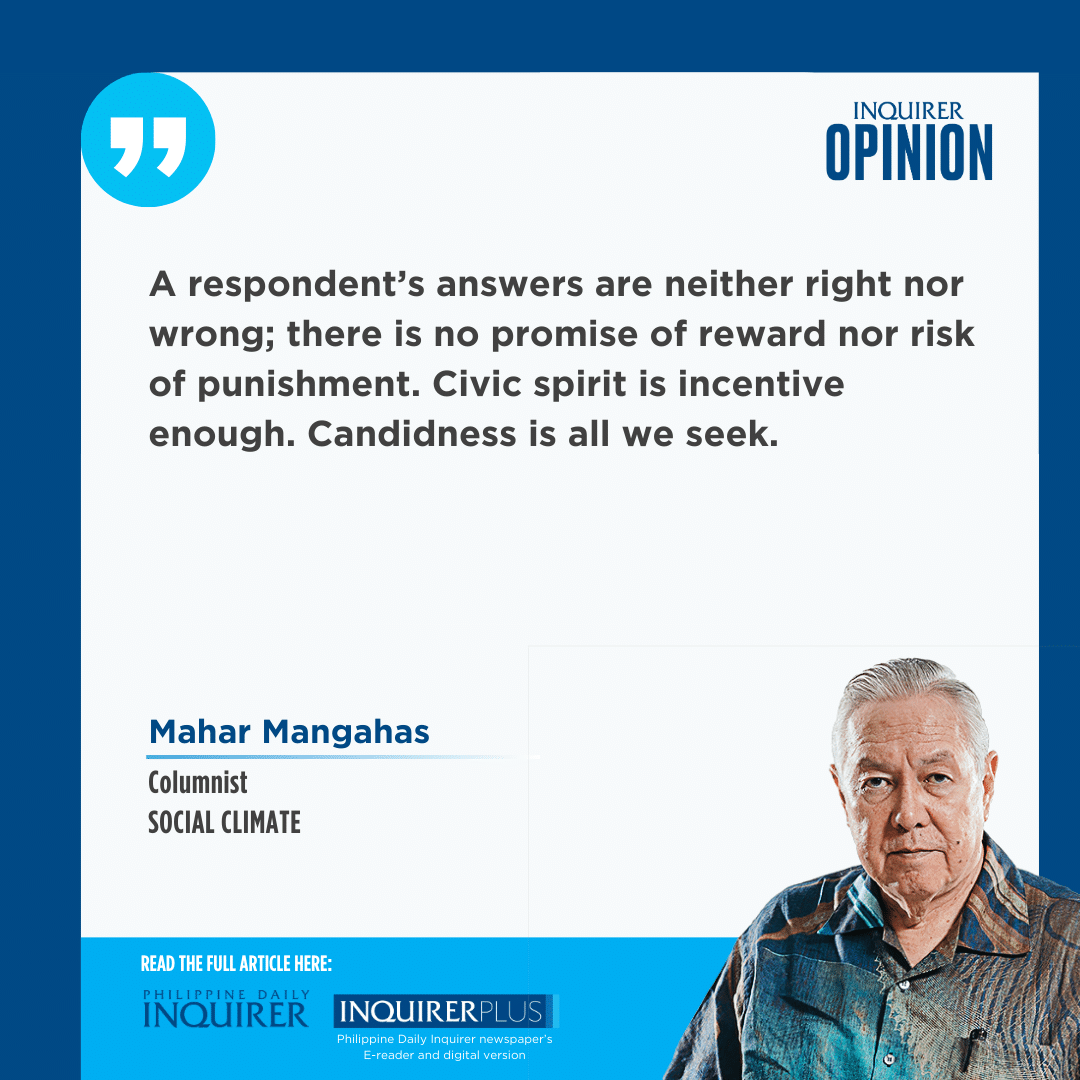Between two elections

Based on the polls that led up to the United States elections last Nov. 5, what are the lessons for us Filipino survey users and doers, heading towards our own national and local elections next May 12th?
I recommend the piece, “2024 polls were accurate but still underestimated Trump,” by G. Elliott Morris, abcnews.go.com, 11/9/2024. “A modest error in his favor was enough to sweep the swing states,” he says. He justifies the word “accurate” by pointing out that the average poll in the last three weeks of the campaign missed the margin of the election by just 2.94 percentage points.
Article continues after this advertisementIn six of the seven main swing states (since the Arizona count was still incomplete), the miss was only 2.2 points. Morris puts his points into subheadings: 1. Polls in 2024: Low error, medium bias. 2. Phone polls and online opt-in panels struggled in 2024. 3. Polls underestimated Trump by less than in 2020 and 2016. 4. State polls missed in the same direction as 2016 and 2020. 5. You should expect errors in polling.
Since the average miss appeared narrow, the real problem was that so many of the misses were not scattered around, but only on one side of the main bull’s-eye, the presidential vote. Thus, there was a bias in the shots fired. Were there some issues with the guns and/or ammunition? How about the aim of the shooters?
I think that whatever needs fixing doesn’t lie with American voters themselves (assuming their votes were counted correctly), but with the science and art of discerning their voting preferences, in advance of voting.
Article continues after this advertisementThe gold standard of polling in the Philippine setting. For me, the gold standard of polling is a personal interview of a respondent by a congenial field worker, freely and politely admitted to the home, having acquired basic rapport.
The best mode is face-to-face, not by telephone, nor online. The interview could last an hour, taking up important issues and filling in details about the respondent’s family situation and community environment. People don’t mind the time if the subject is very interesting. Simple Filipino hospitality works very well.
A respondent is selected by a series of random processes—to select the neighborhood, then the dwelling, then the individual herself or himself; and if not immediately available for interview, then by appointment for another time. In this way the only persons excluded are the homeless and those living in institutions. There is no dependence on telcos for a base of phone numbers.
The interview is carefully structured, for convenient implementation. A respondent’s answers are neither right nor wrong; there is no promise of reward nor risk of punishment. Civic spirit is incentive enough. Candidness is all we seek. Most respondents are pleased with their good fortune at being surveyed, and their voices thereby being heard by the VIPs to whom surveys are really addressed.
The interviewer leaves proper identification that acknowledges the interview; she—women are much more effective field-workers than men—will report her judgement as to whether the respondent has been reasonably frank.
Repeated polling deserves refreshed sampling. Examining the progress of an election campaign requires periodic polling; the final poll before election day is usually too late to correct errors or set a new course.
Personally, I don’t recommend the panel approach—which means returning to old respondents and re-polling them. Any panel will have an original bias, which though small will get solidified by reuse. Panel members will expect compensation for further participation. The cost of finding fresh respondents is minor compared to that of re-polling old ones at the risk of maintaining their bias.
If repeated polls are needed, they should not be oversized. Usually, 300-500 respondents are enough for an accurate view of a campaign, once the contenders are already known.
Look for a survey library, or at least start your own. All over the country, there are academics and others, experienced in election campaigns, who have been users or doers of polls. Seasoned, especially dynastic politicians, know who these people are.
My guess is that those “old” surveys are only in storage, for reference as needed. They will provide insight on election issues and personalities of years ago, which may be meaningful for today. The analysis of present voter preferences should both draw lessons from the past, and be recorded for the future.
—————-
Contact: mahar.mangahas@sws.org.ph.
















